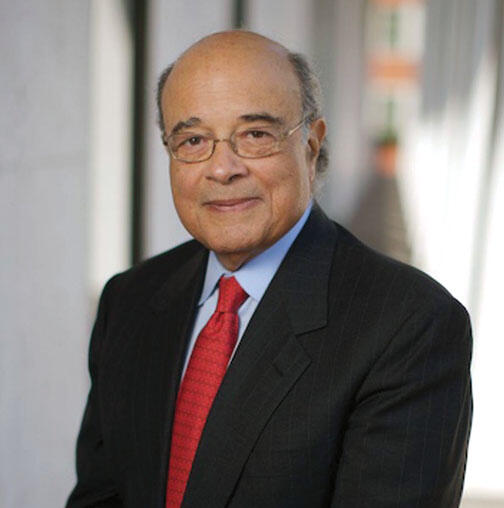A moment with ... Adel Mahmoud
Adel Mahmoud joined the Princeton faculty in 2006, following a career as a medical professor and as president of MerckVaccines. Mahmoud, now a lecturer with the rank of professor in molecular biology and international affairs, has written and spoken about global disease control and public health problems, most recently the H1N1 virus, commonly known as swine flu. He spoke with PAW in early May.
The H1N1 virus seems not to be as virulent as originally was feared. Did we overreact?
No. We are destined to have pandemic influenza sooner or later. If you see an infection that starts, as this one did, in one country and spreads to 29 others in less than a month, public health authorities should take precautions. Such a virus is a continuous threat that can come back at any time and at any degree of severity. I’m delighted that the impact has not been as bad as anticipated, but the story is not over yet.
Did the public health system work as it should have?
I think it worked very well. Mexico was very responsible in reporting all cases of the H1N1 outbreak from the beginning. All members of the World Health Organization agreed to new international health regulations that require them to report all new disease outbreaks. So you no longer can sit on something like this and try to keep it quiet, as other countries have done in the past.
Is this virus likely to return, and if so, what should we be doing?
We should be very alert during the coming flu season [fall/winter]. This influenza virus is capable of changing and acquiring greater virulence from very unpredictable directions. We need to increase public awareness of influenza in general, and we should make a decision about whether to prepare a vaccine for H1N1, because it takes about six months to produce.
Should everyone get a flu vaccine each year?
Children and people above the age of 60 should get a flu vaccine every year. Recent epidemiological research shows that children play a significant role in spreading seasonal flu. I’m not sure the evidence suggests strongly that everyone else needs to get it.
What are some other recent innovations in immunization?
In the last couple of years there have been two very important new vaccines. One is the rotavirus vaccine that was launched two years ago. The other is the human papillomavirus [HPV] vaccine, which has the potential to reduce tremendously the incidence of cervical cancer. The HPV vaccine ought to become a routine part of adolescent immunization for girls.
Some people resist vaccination. How big a problem is this?
Immunization should be as widespread as possible because of the need for something called herd immunity. If you protect a significant proportion of the population through vaccination, you end up protecting almost everyone, even those who haven’t been vaccinated, by reducing the ability of the microbes to spread.
The pharmaceutical industry often is demonized in political debates. Has the industry been depicted unfairly?
Yes and no. We would not be where we are today in terms of protecting public health without the pharmaceutical industry. But the industry needs to recognize the criticism of some of its advertising practices and certain aspects of its relationship with health-care providers. There has to be a relationship with health-care providers, but it has to be transparent and above board. The industry needs to assess whether it is really providing what the global society needs.
The Obama administration has promised to push for universal health care this year. Are you concerned that this would stifle innovation in the pharmaceutical industry?
It is incredible that such a wealthy country does not provide health care for every one of its citizens. I’m not concerned whether you have a government-run system or a private system, but nobody should be without health care.
There was a great deal of concern about bioterrorism after 9/11. Have we let our guard down?
Thank God the anthrax incident [in 2001] was limited, but scientific advances have given people the ability to do things they never could before. We now have the ability to re-create organisms that existed many years ago. For example, from fragments of DNA, the 1918 influenza virus was reconstructed. That is known as “dual-use research.” One use would be for legitimate scientific inquiry and research. But what would happen if terrorists were able to utilize the same technology? That is why we shouldn’t let our guard down. We need to increase governmental awareness and the social responsibility of the scientific community so the technology is used for good purposes. π
— Interview conducted and condensed by Mark F. Bernstein ’83













No responses yet